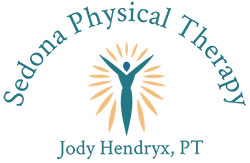
The epidemic of chronic pain that has invaded our life styles has promoted research into proving the properties of fascia that the therapists from Verde Valley Myofascial Release and Hands On-Austin have been feeling and treating with Myofascial Release for over 20 years. Paul R. Standley from the University of Arizona has proven that a low intensity stretch of at least 3 minutes but often as long as 5 minutes, causes a release of cellular messengers called that improve the body’s response to inflammation. This is the cell to cell communication that happens within the fascial system.
It’s important to remember some of the basic concepts of Myofascial stretching and how it’s different from regular athletic type stretching.
For example, the process of a shoulder stretch might be demonstrated as follows:
*Slow your breathing and begin to bring increased awareness into your shoulder.
*Move your arm to where you feel pain and then back down just below the pain and engage the restriction.
*Begin to elongate or telescope your arm and hold the stretch until you feel a softening or lengthening. This is where that 3-5 minute hold is important. As your tissue releases, take up the slack to deepen the stretch and allow your body to move into the next position in space.
*With a longer time-frame, the stretch can move from a local focus to a more global whole body focus connecting distant body parts and increasing our body awareness.
*As the body continues to soften and take up the slack, movement can occur. Allow your body to follow the movement without forcing.
In short, we focus, engage, telescope (elongate and hold), feel and follow the stretch. We get out of it what we put in and it’s quality, not quantity. What opens up may feel good. Conversely, it may not. It may uncover an old accident or injury that your body has tightened around. Tight tissues are weak tissues. The shortened tissues had hardened down becoming dehydrated. This dehydrated fascia loses it’s cell to cell communication. The body had learned to compensate for the shortened, tight space (at some price to you). That newly opened space may not feel “normal” as you have come to know that dysfunctional pattern as normal. Just give it time and trust the process.
One of the things that I hear a lot is, “I don’t have the time to stretch”. And, I often will use the same excuse even though I know that it doesn’t require a lot of time. I continue to see that the time that I do take seems to make the rest of my day easier. I have more energy and I have clearer focus. So, taking the time to open your tightened fascial system can actually give us more time. When we find that stretch within the stretch, it gives us more space within our space.
Do you have a question about Myofascial Stretching? We would be happy to answer them. Just leave us a comment.
Jody Hendryx, PT, LMT
